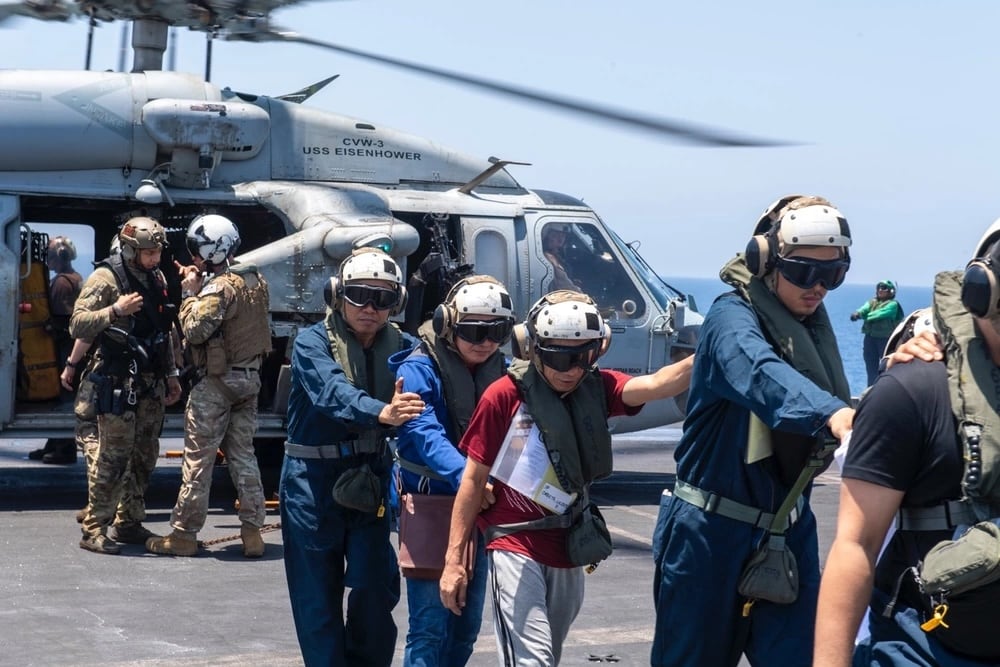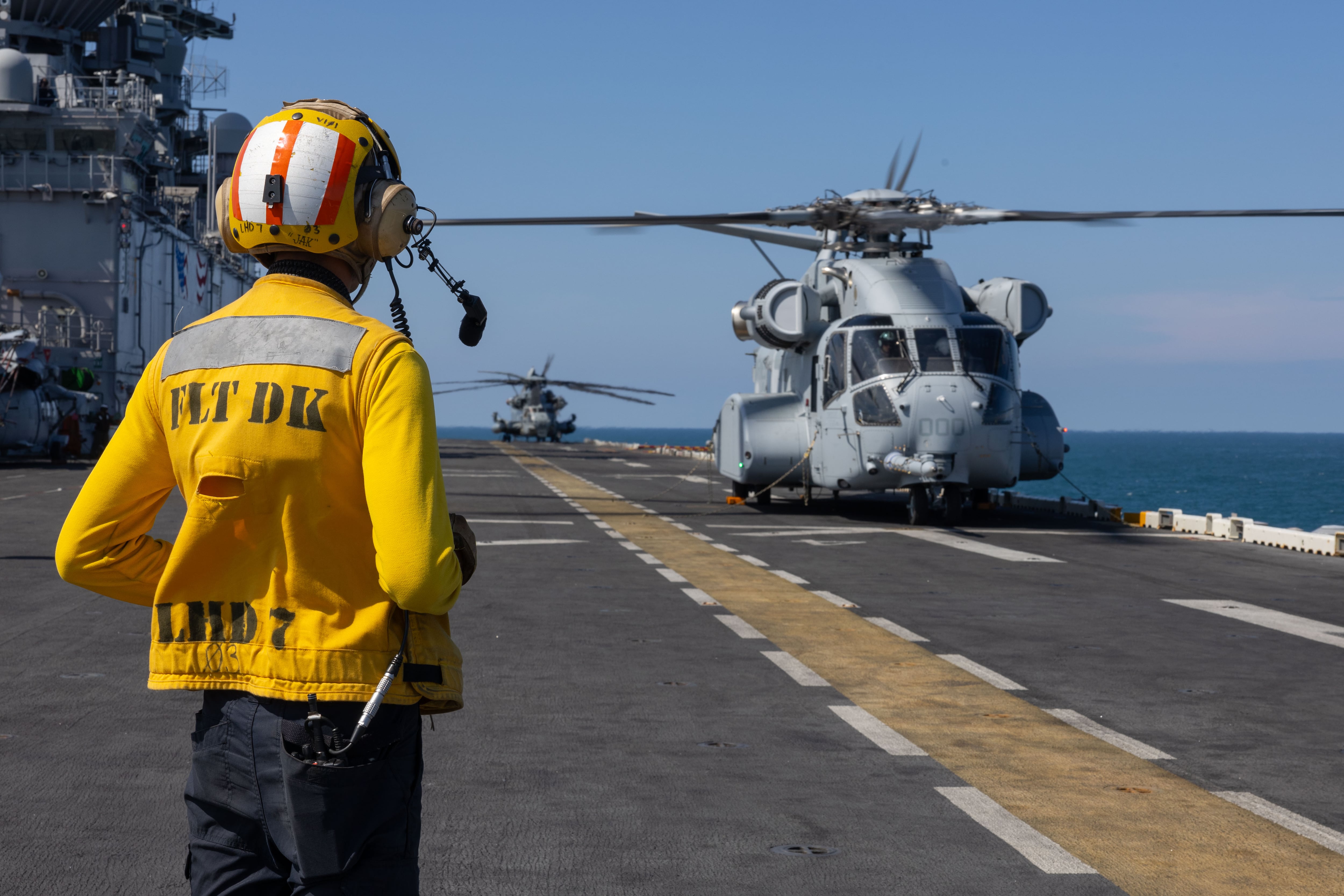Iran-backed Houthi militants in Yemen struck multiple civilian cargo vessels in the Red Sea in June, sinking one and prompting the Navy to rescue mariners from the stricken vessels.
All told, June was a hectic month for the sea service, which has not seen this much sustained combat since World War II.
Go here for Navy Times’ up-to-date tracker of incidents between the Navy and the Houthis.
Among the month’s incidents, sailors assigned to the Dwight D. Eisenhower Carrier Strike Group rescued two dozen civilian mariners from the Liberian-flagged, Greek-owned bulk cargo carrier M/V Tutor, which was struck by a Houthi surface drone on June 12 in the southern Red Sea. That attack caused severe flooding and damage to the commercial ship’s engine room. One mariner on board reportedly died, and the bulk carrier later sank, according to The Associated Press, the second ship to do so amid the rebel group’s months-long crusade on vessels in the region.
RELATED

The Navy also medically evacuated a severely injured civilian mariner from another commercial vessel, the Palauan-flagged, Ukrainian-owned M/V Verbena, which was sailing in the Gulf of Aden and struck by the Houthis. The crew later abandoned the ship due to continued fires and an inability to control them.
While the barrages of drones and missiles continue to threaten ships in the region, the Navy’s aircraft carrier that has led America’s response to the attacks, the Dwight D. Eisenhower, is returning home following more than eight months of combat deployment, according to The Associated Press. The Theodore Roosevelt will take the Ike’s place after a scheduled exercise in the Indo-Pacific, the Pentagon said.
As the Houthis struck more commercial ships in June, the Iran-backed group appears to show little sign of slowing down its campaign of assaults, which began in the fall.
As of publishing time, U.S. and coalition forces destroyed, or tracked the firing, or the intent to launch, of at least 14 Houthi anti-ship ballistic missiles, 38 air drones, and 19 surface drones in June that the Houthis launched or were prepared to use, according to a tally of incidents announced by U.S. Central Command, as well as reporting by Military Times and The Associated Press.
“This continued reckless behavior by Iranian-backed Houthis threatens regional stability and endangers the lives of mariners across the Red Sea and the Gulf of Aden,” Sabrina Singh, the deputy Pentagon press secretary, said during a news conference. “The Houthis claim to be acting on behalf of Palestinians in Gaza, and yet, they are threatening the lives of those who have nothing to do with the conflict. The ongoing threat to the ability to safely transit the region caused by the Houthis makes it harder to deliver commercial goods and critical assistance to the people of Yemen, as well as those in Gaza.”
A Defense Intelligence Agency report released in June found that as of mid-February, container shipping through the Red Sea, which accounts for approximately 10 to 15% of international maritime trade, had declined by approximately 90% since December. It noted that alternative shipping routes around Africa add thousands of nautical miles and weeks of transit time, plus approximately $1 million in fuel costs for each voyage.
At least 29 major energy and shipping companies have altered their routes to avoid Houthi attacks and least 65 countries’ interests have been impacted, the report stated.
Meanwhile, the Department of the Treasury sanctioned a slew of individuals and companies connected to the Houthis in an effort to hinder the group’s funding networks.
“Houthi attacks continue to hinder vital humanitarian assistance from reaching Yemenis and pose dire risks to economic and humanitarian conditions in countries across the Red Sea region and to the broader global economy,” Department of State spokesperson Matthew Miller said in a release.
Jonathan is a staff writer and editor of the Early Bird Brief newsletter for Military Times. Follow him on Twitter @lehrfeld_media





